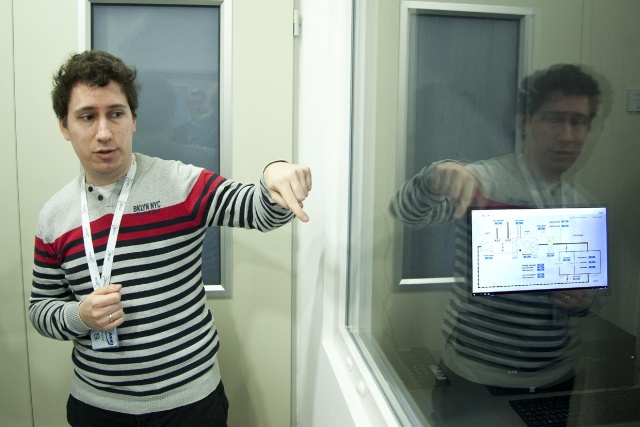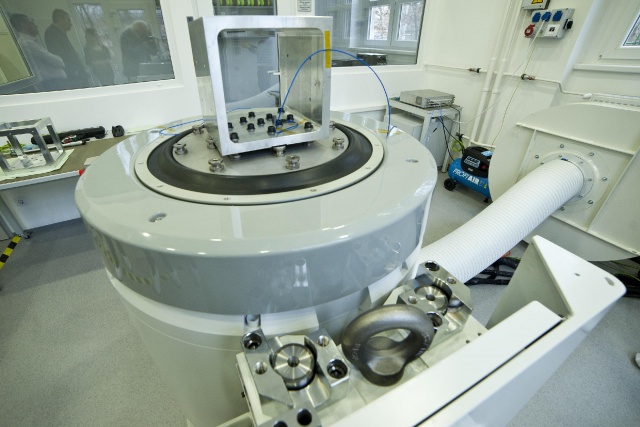New space technology test lab opened in MTA Centre for Energy Research
When Hungary joined the European Space Agency, private space industry was already booming while an explosive development in the world of smallsats was also taking place. Hence a demand for an unprecedented number of space technology tests arose. To satisfy these growing demands, a new test laboratory was built in the MTA Centre for Energy Research, Budapest, Hungary, where most required tests and fitting tasks can be carried out. Besides testing their own devices, the laboratory will also accept orders from industrial partners.
9th April, 2018
Small satellites have developed exponentially in the past years. It is now common for a single rocket to put several dozens of nanosatellites the size of shoe boxes into orbit. The first Hungarian satellite, Masat-1, belonged to an earlier generation of these nanosatellites, and Radcube, its slightly bigger brother will follow it into space in 2018.
However, nothing can be sent into space without thorough testing, which is required not only to ensure the success of each individual mission. Smallsats are put into orbit by private companies, and a rocket may be carrying several satellites simultaneously. If one of these devices cannot tolerate extreme vibration or a part of it blows up owing to the suddenly decreasing pressure, other satellites mounted on the same rocket may also be injured. Thus, today a high level system of standards protects smallsats from each other and from the negligence of designers. To meet these requirements, extraordinary precision and strict testing are indispensable.
However, smallsat designers cannot afford to maintain a test-laboratory. Consequently, after the plans for a smallsat are completed, a logistic nightmare ensues. The satellite has to be transported back and forth from one test site to another. Moreover, after the identification of a fault, the whole process must be repeated: booking, transportation, mounting and dismounting.
New Hungarian space test lab – (almost) everything in one place
The MTA Centre for Energy Research (MTA EK) will attempt to provide a solution to the above described problems. The new space technology research laboratory was established by Ákos Horváth, Tamás Pázmándi, Attila Hirn, Balázs Zábori and their colleagues. Several test phases can be carried out here, while fitting can also be done in appropriate conditions. In addition to testing their own devices, the lab will produce an income as well as they will accept orders from industrial partners.
 Balázs Zábori in front of the cleanroom Credit: mta.hu/Tamás Szigeti
Balázs Zábori in front of the cleanroom Credit: mta.hu/Tamás Szigeti The centre of MTA EK’s test lab is a cleanroom, where air has a controlled level of contamination (e.g. a very low level of dust particles etc.). This room serves for the testing and fixing of smallsats.
Next to the cleanroom, there is a high performance shaker table, which simulates the circumstances during lift off. A thermovacuum chamber and a climate cabinet also work here, where the climate and circumstances in space can be simulated.
 The high performance shaker table Credit: mta.hu/Tamás Szigeti
The high performance shaker table Credit: mta.hu/Tamás Szigeti These facilities ensure that almost the whole smallsat testing process can be achieved in one place, the only test that needs to be carried out off location is to measure the effects of electromagnetic radiation. For this, the satellites need to be transported to another laboratory. However, the employees of MTA EK can provide professional support during this test too.
